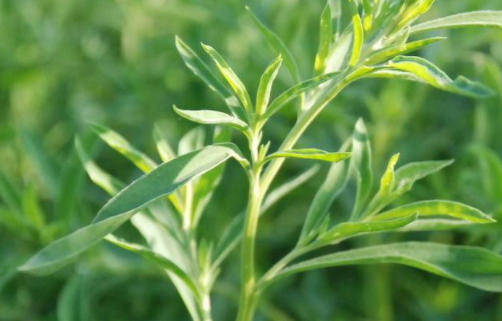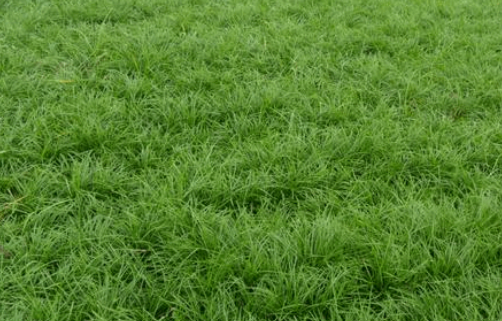How to keep the skin on the ground
Soil
The skin of the soil is not too demanding, it likes loose, breathable, fertile, and good drainage of sandy soil, but it is also resistant to barren and thin soil, can also tolerate alkali soil. It is a kind of plant that is easy to raise.

Light
The skin of the earth likes the sun very much, but its shade tolerance is also very strong, so it can not be overexposed to the sun, nor can it only grow in a dark environment, which is likely to cause the plant to grow too much.
Temperature
Skin is very like to grow in a warm environment, its cold resistance is very poor, and pay attention to maintain the temperature during plant germination, when the temperature is between 10-20 ℃ is the best.
Water and fertilizer management
It is relatively simple in the management of water and fertilizer. In general, plants need to apply sufficient fertilizer at one time when planting, and should be watered once, this time to water the soil thoroughly.
After planting, you need to apply fertilizer 2-3 times a year for the skin, of course, you can no longer apply fertilizer. Watering, although the skin can withstand drought, but still should add a certain amount of moisture, moisturizing the soil, the skin will grow well. During the growing period, the skin is watered every 7-10 days. The soil is dry and wet to avoid stagnant water.
The above is about how to raise the skin of the problem introduction, let's take a look at the points for attention!
Kochia scoparia skin map: how to nourish / reproduce skin Kochia scoparia the introduction of skin culture methods and matters needing attention, annual erect herbaceous flowers, plant height 50-100cm, plant shape ovoid, Obovate or oval, many branches and dense branches, pubescent, stem base semi-lignified. Like sunshine, like warmth, not resistant to cold. It is mainly cultivated widely in our country. Kochia is distributed in Asia, Europe and most of Chinese mainland. It grows in areas ranging from 50 m to 3200 m above sea level, and is usually born by roadsides, fields and wasteland. The garden use of the skin is for the layout of flower hedges, flower mirrors, or several clusters planted in the center of the flower bed, which can be trimmed into a variety of geometric shapes for layout. Potted skin can be embellished and decorated in halls, halls, venues, etc. Garden cultivation is mainly its variety of fine leaf broom grass (var.culta): plant shape is short, leaves are thin and soft, tender green, and turn to reddish purple in autumn. The ecological habits of the skin like sunshine, like warmth, not cold-resistant, extremely resistant to heat, salt and alkali, drought and barren. It is not strict with the soil. It is very easy to self-broadcast and reproduce. The way of reproduction is sowing and reproduction, spring sowing, suitable for direct seeding. At the beginning of April, the seeds were sown in the open field seedbed and germinated quickly and neatly. The distance between seedlings after planting is 50cm. The medical information and health food therapy information of skin dietotherapy or medicinal value Huanhua net are for reference only, and can not be used as the basis of diagnosis and medical treatment. Any health problems should consult professional health care personnel, the treatment of any disease, please follow the doctor's advice. The ultimate task of protecting flowers: to love yourself, proceed from reality and follow the doctor's advice. For disease, do not be careless, do not postpone, do not give up hope, face it bravely, warm the silent world with love, and protect the inner flower field with your heart. The seedlings and tender stems and leaves of edible ground skin can be fried or stuffed, or dried vegetables can be dried after scalding and boiled with water when eating. But the old stems and leaves become hardened and there are many fibers. Ripe fruit is used in medicine, which is called "skin skin". It has cold taste, sweet and bitter taste, clearing heat and diuresis, diuresis, mainly treating skin eczema, eczema pruritus, urine leaching, beriberi edema and so on. Its stems and branches are edible and can be used as a broom when it is ripe, so it is also called "broom grass". Is the skin blooming in the picture of the skin?
Is the skin blooming?
There are many people raise the skin, but always look at the green skin, so whether the skin blossoms in the end. The skin of the earth blossoms, but the blossom of the skin is very small, which is not obvious at all, so sometimes, the local skin blossoms, if you do not observe carefully, it is not easy to find.
The flowering period of the skin
The flowers bloom, mainly from June to September, and the flowering period will last for a period of time. It is worth noting that if the skin is wild, then its florescence is from July to August, if the skin is artificially cultivated, the florescence is from June to August. After flowering, it will bear fruit, which is from August to October.
The flowers are small, with spikes, the flowers are reddish brown, there is no ornamental value, after flowering will bear small oblate fruit, the fruit can be used as medicine.
In the flowering period of the skin, fertilizer is needed because a lot of nutrients are needed to keep the flowers blooming. Apply some fertilizer before flowering, give sufficient nutrients to the skin, and apply some potash and phosphate fertilizer during flowering to ensure the balance of elements. Pay attention to the removal of weeds, lest weeds and skin compete for nutrients, affecting the growth of skin.
Picture appreciation of skin blossom
The skin will open reddish-brown flowers, the flowers look small, the shape is also very ordinary, giving people the feeling is nothing special. Moreover, if you don't observe it carefully, you may not be able to see the flowers of the ground skin.
From this point of view, the flowers are easily ignored by people. People probably prefer its leaves to these flowers.
In fact, the flower of the skin, the greatest role is to bear seeds, it itself has no ornamental value.
Although you can't appreciate the big and gorgeous flowers, the skin looks good as a whole.
- Prev

How to raise Ophiopogon
The time to plant Ophiopogon japonicus is usually in sunny evenings or cloudy days, where the sun is generally not too strong. At this time, we need to plant the seedlings of Ophiopogon japonicus in the soil. It should be noted that when planting, the root of the plant should be perpendicular to the ground.
- Next

Cultivation techniques of Artemisia mandshurica
Cultivation techniques of Artemisia mandshurica
Related
- Fuxing push coffee new agricultural production and marketing class: lack of small-scale processing plants
- Jujube rice field leisure farm deep ploughing Yilan for five years to create a space for organic food and play
- Nongyu Farm-A trial of organic papaya for brave women with advanced technology
- Four points for attention in the prevention and control of diseases and insect pests of edible fungi
- How to add nutrient solution to Edible Fungi
- Is there any good way to control edible fungus mites?
- Open Inoculation Technology of Edible Fungi
- Is there any clever way to use fertilizer for edible fungus in winter?
- What agents are used to kill the pathogens of edible fungi in the mushroom shed?
- Rapid drying of Edible Fungi

